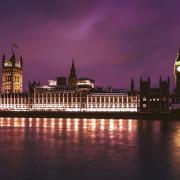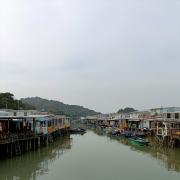
Nestled between the greenery and the dual carriageway of High Road, Woodford Green, lies a small statue that marries the area with considerable world history.
Named the Anti Air War Memorial and erected in 1935 under the watchful eye of suffragette Sylvia Pankhurst as a protest against aerial warfare, the statue has stood strong for eighty-five years [1]. I was made aware of it by my school as part of Black History Month. Despite having walked past it multiple times, I can safely say I’d never really noticed it. However, what could surprise us most, is how this Anti Air War Memorial links to Ethiopian history.
Pankhurst was an adamant pacifist. She ran a tearoom in the property behind the memorial for thirty years, but a key connection was her involvement in Ethiopia (then Abyssinia.) The monument was partly in protest to Mussolini’s aerial attacks on the country.
In 1935 Ethiopia was one of the few countries in Africa that had independence. Italy had been humiliatingly defeated by them in 1896 when it became the only European country to have been beaten in war by an African country [2]. Eager to expand his empire in East Africa and trying to redeem Italy, Italian dictator Benito Mussolini disobeyed the League of Nations and in October 1935 invaded Ethiopia [2]. The Italian army acted brutally to the Ethiopians who were not prepared for conflict. Horrifyingly, seven per cent of the population were killed in war crimes against civilians [3].
The Ethiopian Emperor Haile Selassie I was consequently exiled to England and Pankhurst became a crucial supporter of his, opposing the fascist rule in his homeland. Eventually, Ethiopia became the first country liberated from the Axis powers in 1941 [2] [4]. Partially as a protest to the war in Ethiopia, Pankhurst had the Anti Air War Memorial unveiled by R. P. Zaphiro, secretary of the Imperial Ethiopian Legation [1].
Pankhurst died in Addis Ababa in 1960. For efforts and dedication towards bettering the country, Haile Selassie titled her an “honorary Ethiopian” [5].
The timing of the memorial was undoubtedly ironic. Placed just outside the city centre that would be bombed almost every day for eight months within five years of the statue’s establishment and unveiled by a man whose country would endure a vicious war and later occupation, that relied heavily on aerial bombardment.
Upon discovering the memorial, local resident Madi Busfield-Payne felt “it was quite surprising that [she] had never noticed the memorial” but also went on to say she found “it was very interesting learning about the history of it and it was quite amazing how many historical events were connected to it.”
I’m not sure many of us could have imagined that so much of this major world history is nestled in the leafy suburbs of London, in a memorial that hundreds of people drive or walk past every day. Perhaps we should consider just how much more history is embedded around us — in such a globalised world it could only be beneficial that we come to realise our everyday lives are not as isolated as we first perceive.
Bibliography
[1]
"ANTI AIR WAR MEMORIAL," Historic England, [Online]. Available: https://historicengland.org.uk/listing/the-list/list-entry/1081040. [Accessed 20 October 2020].
[2]
E. Yared, "The Second Italo-Abyssinian War (1935–1936)," BLACKPAST, 8 March 2016. [Online]. Available: https://www.blackpast.org/global-african-history/second-italo-abyssinian-war-1935-1936/. [Accessed 20 October 2020].
[3]
G. Martel and B. R. Sullivan, The Origins of the Second World War Reconsidered, Routledge, 1999.
[4]
"Sylvia Pankhurst," Wikipedia, 10 October 2020. [Online]. Available: https://en.wikipedia.org/wiki/Sylvia_Pankhurst#Supporter_of_Ethiopia. [Accessed 20 October 2020].
[5]
O. Barder, "Fifty years since the death of Sylvia Pankhurst, Ethiopians pay tribute," Owen Abroad, 17 October 2010. [Online]. Available: http://www.owen.org/blog/3915/. [Accessed 21 October 2020].



























